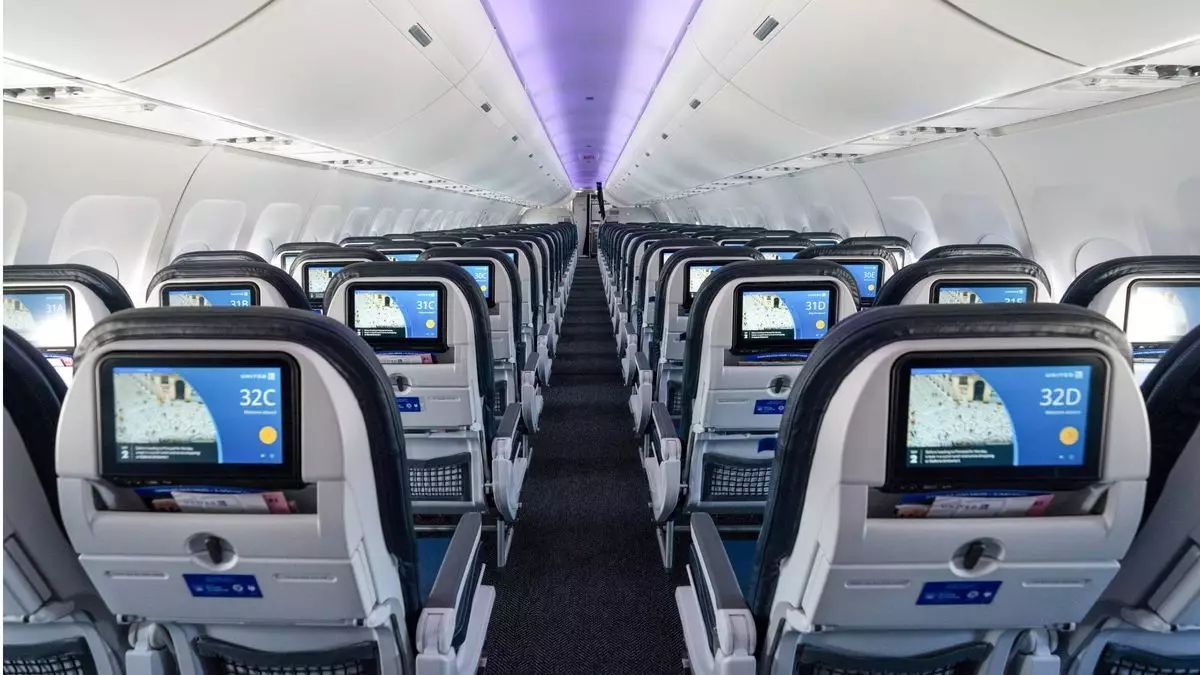In recent times, the aviation industry has witnessed significant changes in consumer behavior and airline pricing strategies. United Airlines has found a lucrative corner in this landscape with its basic economy offering. The company’s third-quarter earnings call revealed a remarkable 20% increase year-over-year in revenue from basic economy tickets, a stark contrast to the prior year’s staggering 50% jump. This growth isn’t just a fleeting success; it reflects a fundamental shift in United’s approach to capturing different market segments. Chief Commercial Officer Andrew Nocella has publicly hailed basic economy as a “home run,” underscoring its transformative impact on the airline’s financial stability and operational dynamics.
One striking statistic from United’s quarterly report indicates that basic economy passengers now represent about 16% of the airline’s domestic customers, compared to 12% just a year prior. This demographic shift reflects a growing acceptance of no-frills travel amidst rising costs. As travelers increasingly prioritize budget over traditional comforts, United has capitalized on this trend by devising a fare class that appeals to price-sensitive consumers. However, this does not come without trade-offs; basic economy travelers are excluded from certain advantages, such as seat selection and overhead bin access, features many flyers traditionally take for granted. Hence, United has successfully tapped into a market that seeks affordability, even if it means sacrificing some convenience.
Beyond just the surface-level fare adjustments, United is implementing strategic changes to enhance its operational capacity. With an anticipated average of 145 seats per departure by 2027—up from 104 in 2019—the airline is positioning itself to offer more basic economy seats across its network. This elevated capacity will not only allow United to meet the continuing demand for budget travel but will also enable the airline to refine its balance between low-cost and premium offerings. The intent is clear: by increasing the inventory of lower-cost tickets without compromising on premium experiences, United seeks to attract diverse customer segments while protecting its profit margins.
Balancing Basic Economy with Premium Products
While the expansion of basic economy is pivotal to United’s strategy, the airline is not neglecting its premium offerings. The diversification of cabin products—ranging from the basic economy to the elite Polaris business class—indicates a tactical approach to capture both ends of the market spectrum. This strategy not only allows United to compete more effectively with rivals like Delta and Alaska, who enjoy healthy profit margins, but also solidifies its reputation as a full-service airline. Nocella’s assertion that more basic economy capacity will be rolled out if profitability remains high points towards a flexible business model adaptable to market shifts.
United Airlines’ financial performance in the third quarter tells a complex story. Although the airline reported a revenue of $14.84 billion, which outpaced Wall Street expectations, the net income of $965 million reflects a 15.1% decline year-over-year. Such a drop underscores the importance of enhanced pricing strategies in a competitive and often unpredictable market. Additionally, while there was a slight dip in revenue per passenger mile spent due to overcapacity early in the quarter, analysts suggest that airfares have rebounded since mid-August, placing United on a path to recovery.
Controversies and Future Directions
The announcement of a $1.5 billion stock buyback plan has elicited mixed reactions, particularly from the Association of Flight Attendants-CWA, which is currently engaged in contract negotiations with the airline. This tension reveals underlying labor relations issues that United must navigate carefully as it aims to grow profitability. Stock buybacks, while generally viewed favorably by investors, might raise questions among employees about priorities within the company.
United Airlines is clearly pioneering a dynamic shift in the airline industry, increasingly leaning on its basic economy fare while still striving to provide premium services. With strategic capacity enhancements and a clear focus on profitability, the airline is poised for further growth. However, as it continues to embrace this dual approach, United will need to balance stakeholder interests, including those of its workforce, to sustain momentum in an ever-evolving market landscape. The forthcoming quarters will be pivotal in demonstrating whether this strategy can withstand external pressures and internal challenges alike.

